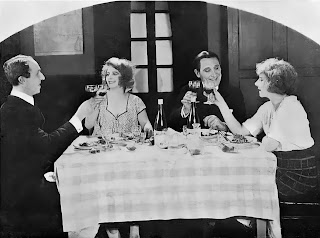One or two plays?
But according to the star Armand Bernard in Mon Ciné of November 11, 1923, it is an adaptation of a play entitled "Il est cocu le chef de gare" played at Déjazet, written by Nicolas Nancey and played by Léo Rivière, Pierre Darteuil and Yette Rénot.
Nicolas Nancey, born Nicolas Zouros in Marseille and died in Vichy in 1925 prematurely from pulmonary congestion at the age of 51, wrote many vaudevilles, the most popular of which was "Théodore et Cie". It should be noted that on June 30, 1923, Comeodia announces that the next film by Saidreau and Armand Bernard is indeed an adaptation of Nancey, but retains the play "Pétoche", co-written with Rioux and played by Dranem at Eldorado. L'Intransigeant confirmed this fact on July 21, 1923, "when editing began on At the station with Armand in the role of Pétoche, from the work of M. Nancey". Are we dealing with a condensed film version of two plays? In any case the film tells the story of a traveler, Mumudec (Armand Bernard), who finds himself involved in the adventures of the not-so-faithful wife of the station master.
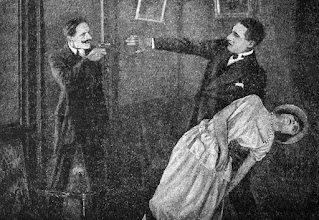 |
| The station master (Louis Pré Fils) is jealous of Farney |
Cast
The film is moreover carried by Armand Bernard, who also collaborates for the second time with Saidreau. It is announced on June 20, 1923 that he has just finished Ma Tante d'Honfleur, "first in a series of comedies for Diamant-Berger published by L'Agence générale cinématographique ", which he is currently filming "At the station", and will soon make a great comedy based on a famous play in a month. Notice the frenetic pace of filming of this actor, then so popular.
The famous "Planchet" of The Three Musketeers is not the only survivor of the adaptation of Dumas to play here: Charles Martinelli who played Porthos, Marcel Vallée (Mousqueton), Louis Pré-Fils (Grimaud) and Antoine Staquet (Bazin) are also in the cast.
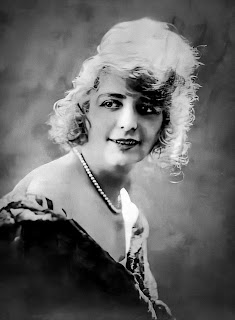 |
| Marguerite Moussy |
Paulette Ray also signs her second film with Saidreau, but she worked with him earlier, in La nuit de la Saint-Jean. She will quickly give up the profession for her marriage after the film I Have Killed.
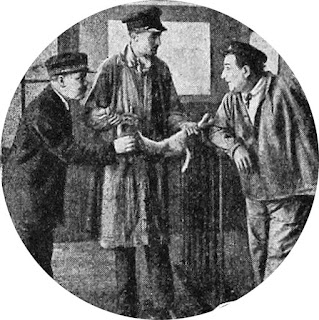 |
| Antoine Stacquet, Armand Bernard and Marcel Vallée |
Shooting
While we are announcing the upcoming end of the shooting on October 6, we can imagine that it does not go without problems: the operator Alfred Guichard, carried away by a collapse of coal, fell from a moving locomotive with his apparatus which alone was broken, a fact reported in Paris Soir on October 8 and Mon Ciné on November 15. We can all the same deduce that the camera movements must have, with the intention at least, rival those of The wheel.
The release
A fate that it shares, to a lesser extent, with the next one, Un fil à la patte. Could it be that the director's legal troubles played out in this frankly exceptional timeframe? It is in any case disturbing to note that the traditional procedure of distribution is not engaged until soon after the death of the director.
So on December 23, 1925, the film was presented at the Empire. And we find a first release for the public in Marseille, at the Régent Cinéma, on February 26, 1926 and in Angers at the Palace on July 22, 1926!
Despite this oddity, the film apparently had enough success to be remade in a sound version less than 10 years later by René Guissart under the title Ah! Quelle gare and it is Dranem who again holds the main role. We have come full circle.
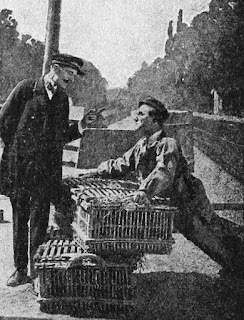 |
| Louis Pré Fils and Armand Bernard at the station |
To read the next chapter on the work of director Robert Saidreau, click here.
Click "Like" on the Facebook page if you like my blog.
That's all for today folks! See you soon !
